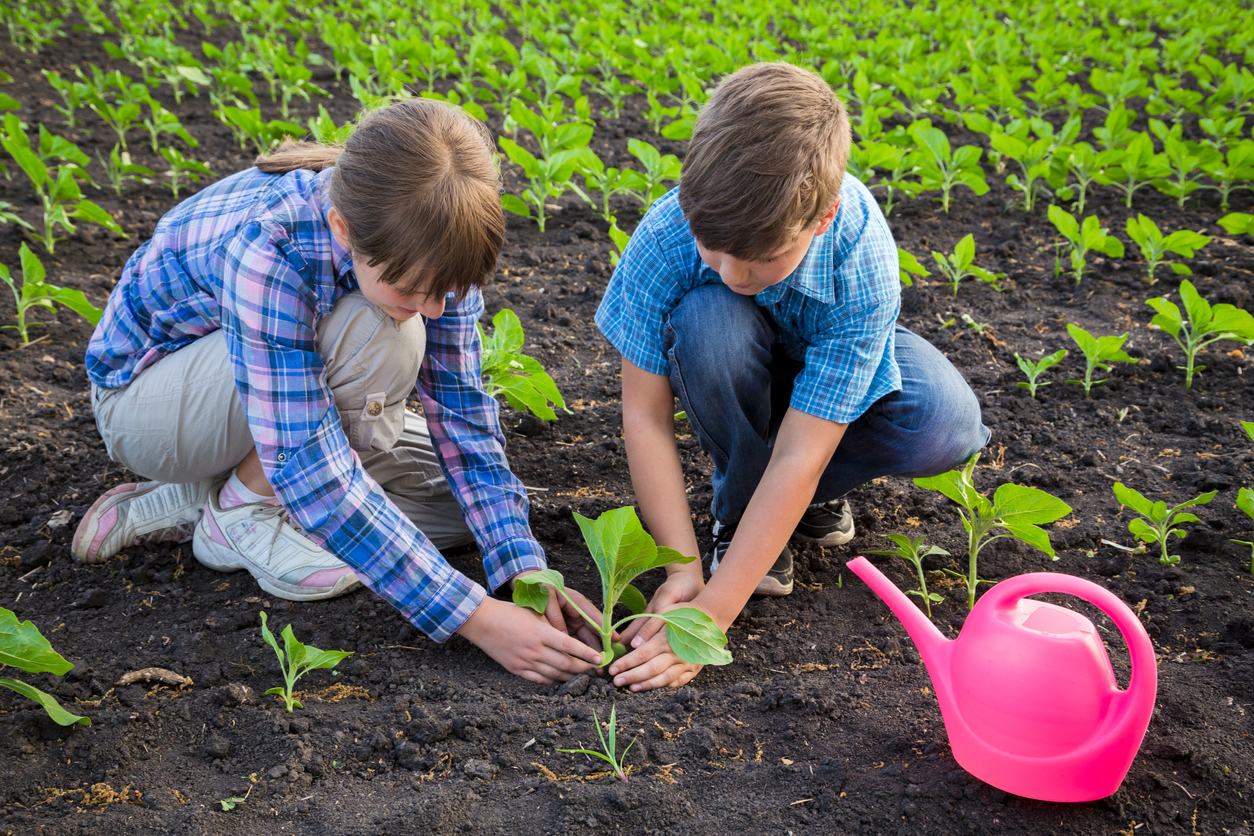There’s really not much that’s cooler than a kid’s vegetable garden. It combines all things fun and neat in the world, and you get to experience gardening through their eyes. Kids can get their hands dirty, they get to take care of something, and they get to see the payoff of their work —they get to eat it, too!
The best part about planting a kid’s vegetable garden is that I swear they eat their dinner so much better. Right before dinner, my daughter and I peruse the garden for whatever’s ripe and make it part of dinner. I give her a dull knife (she’s two) to let her hack away at a few things, and let her throw it into whatever I’m cooking. When the meal comes out, she’s so proud that she eats like a champ!
For older kids, planting a vegetable garden is a great way to teach science and instill a sense of responsibility as they care for their garden. To be honest, I think it’s also a good way to learn patience and learn that your work may not have immediate payoffs. Or maybe I’m projecting, because heirloom tomato plants have certainly taught me a lot about patience. And I still get excited when I gather herbs from my garden to add to a recipe!
Discover 10 top tips for growing, harvesting, and enjoying fruits, vegetables, herbs and more from your home garden—when you access the FREEBIE How to Grow a Vegetable Garden, right now!
Fool-proof plants for a kid’s vegetable garden
Okay, regardless of how you may feel about the everyone-gets-a-trophy approach to parenting, a kid’s vegetable garden is one place where there really is value in “getting a trophy,” so to speak. Even as an adult, it’s pretty darn disappointing when my vegetables don’t grow. So tip #1 is to plant veggies that are easy to grow and easy to take care of. And as much as patience is important, it’s still nice when it doesn’t take 6 months for your plants to produce.
That means sticking to plants that are relatively easy to care for and that grow quickly. Sorry asparagus, much as I love you, you’re out of this picture. And don’t forget all the regular gardening requirements apply to a kid’s vegetable garden, as well. So plenty of sunshine, good soil, and proper planning. Got it.
Lettuce / Greens. Lettuce grows quickly and easily. And once you cut it, younger kids will love tearing the leaves up for you to make a salad.
Cucumbers. Cucumbers grow like weeds, so you shouldn’t have trouble growing them. They’re also relatively easy to “pick”. Older kids who can use shears just need to clip them leaving about an inch of stem.
Radishes. If there’s one vegetable that meets all these checklist items, it’s the radish. Radishes sprout in just a few days and you can harvest them in about three weeks. Plant them in cool, early-spring soil, and you’ll have radishes in your salad in no time.
Turnips. Another root vegetable, the turnip, is similarly easy, and some varieties are ready to harvest in as little as four weeks.
Cherry tomatoes. While radishes and turnips grow quickly, one plant that you can have fun watching mature from seedling to full fruit is the cherry tomato. These are great plants for a kid’s vegetable garden as they can produce massive amounts of fruit, they’re super tasty right off the vine, and you can grow them in a container. Plus, it’s just fun to check them every day and see them grow.
Beans. No kid’s vegetable garden would be complete without bush beans. These are the classic biology class science experiments, in part, because they germinate so quickly. Bush beans are fun, too, because picking the ripe beans actually encourages the plant to produce more. They’re also easy to pick for the littlest hands.
Pumpkins. This one is my favorite because kids love to grow pumpkins. You get to watch them grow all summer long, and in the fall, the kids will love having a bounty of pumpkins to cook with, decorate, and eventually smash. Just plan a lot of room for pumpkins, I grow them in an entirely separate area so they don’t overtake my garden.
Herbs. Planting an herb garden to go alongside your vegetables is especially great for the toddlers like mine who love to pop the heads off all of your flowers. Telling them before dinner that they can go out and pluck all the herbs they want makes them super happy.
What should your kid’s vegetable garden look like?
Don’t get wrapped up in what the garden should look like or whether or not it’s in the yard or in a container. This is about having fun and learning. You could even go with fun and unusual shapes if you plant outdoors.
I think the best way to plan a kid’s vegetable garden is to think of it in stages.
If you opt for a container garden, you can get kids psyched about gardening by letting them paint plant pots while they’re stuck indoors for the winter.
When the spring comes, plan out your veggies, and grow your seedlings. Don’t be surprised if they’re impatient at first, they’ll love watching the sprouts when they finally pop up.
Then when it’s time, they’ll love planting everything in the pots they painted (or in the ground).
Finally, make harvesting fun by incorporating their bounty into mealtime.
The more you can let your kids drive the bus on this, the more they’ll get out of the experience.
Have you ever planted a kid’s vegetable garden? How did you decide what to plant and how it should look? I’d love to get your thoughts in the comments below.
Discover 10 top tips for growing, harvesting, and enjoying fruits, vegetables, herbs and more from your home garden—when you access the FREEBIE How to Grow a Vegetable Garden, right now!
